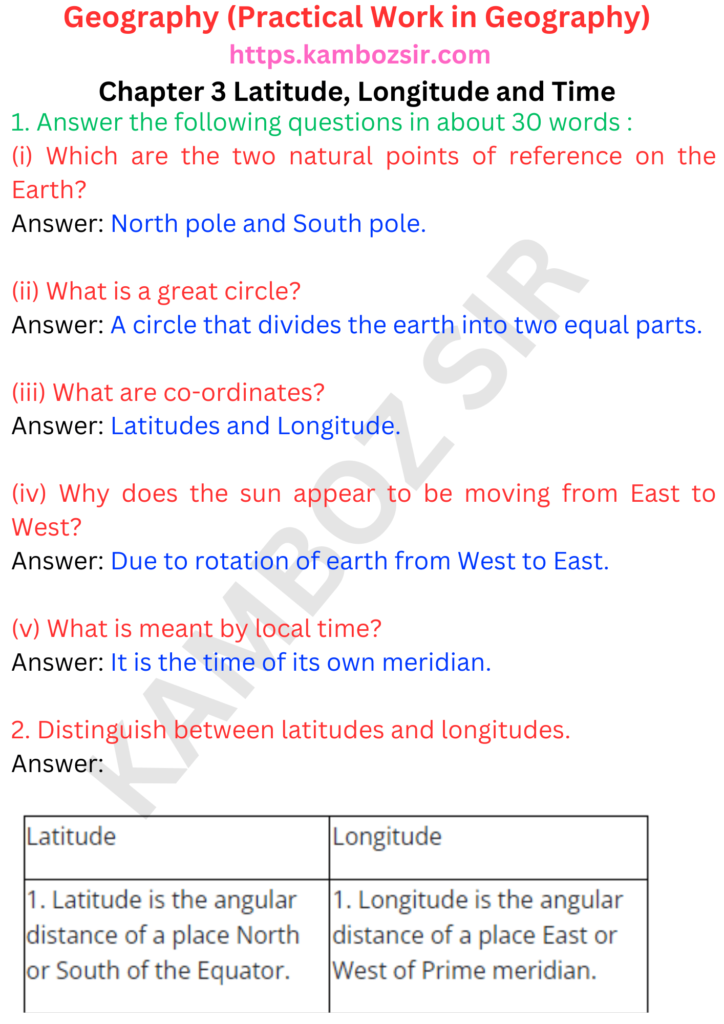Class 11 Geography Chapter 3 Latitude Longitude and Time Solution
Class 11 Geography Chapter 3 Latitude, Longitude and Time Solution
In Chapter 3 of Class 11 Geography, we explore the concepts of latitude, longitude, and time, which are fundamental for understanding the Earth’s spatial organization and timekeeping.
We begin by understanding latitude, which is the angular distance measured in degrees north or south of the Equator. The Equator itself is the reference line for measuring latitude and is designated as 0 degrees. We learn about the significance of parallels of latitude, such as the Tropic of Cancer, the Tropic of Capricorn, and the Arctic and Antarctic Circles, in defining different climatic zones and geographic regions.
Next, we delve into the concept of longitude, which is the angular distance measured in degrees east or west of the Prime Meridian. The Prime Meridian, passing through Greenwich, London, serves as the reference line for measuring longitude and is designated as 0 degrees. We explore the significance of meridians of longitude in dividing the Earth into different time zones and understanding the concept of International Date Line.

